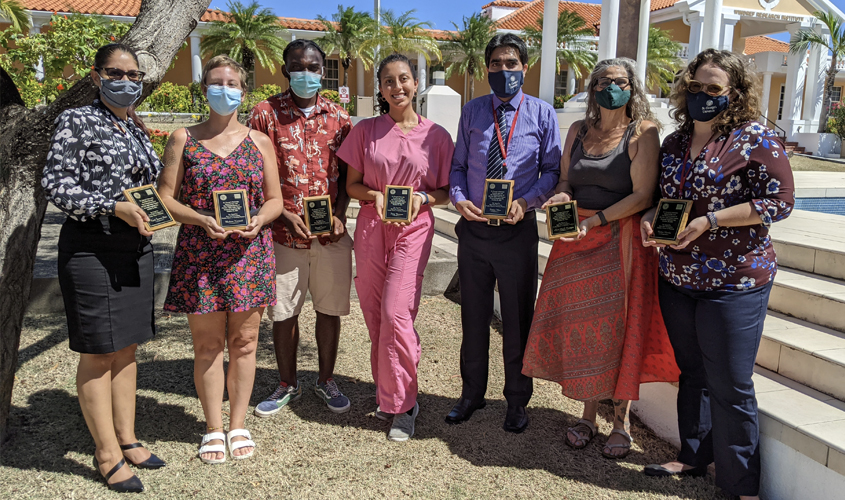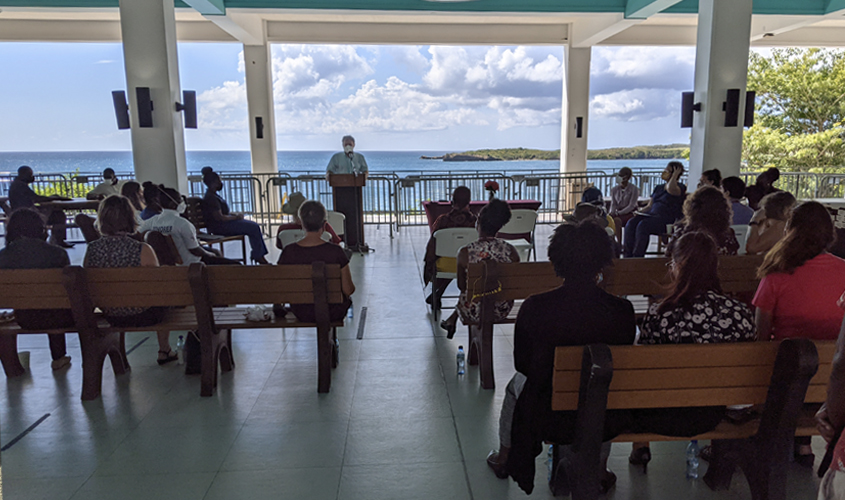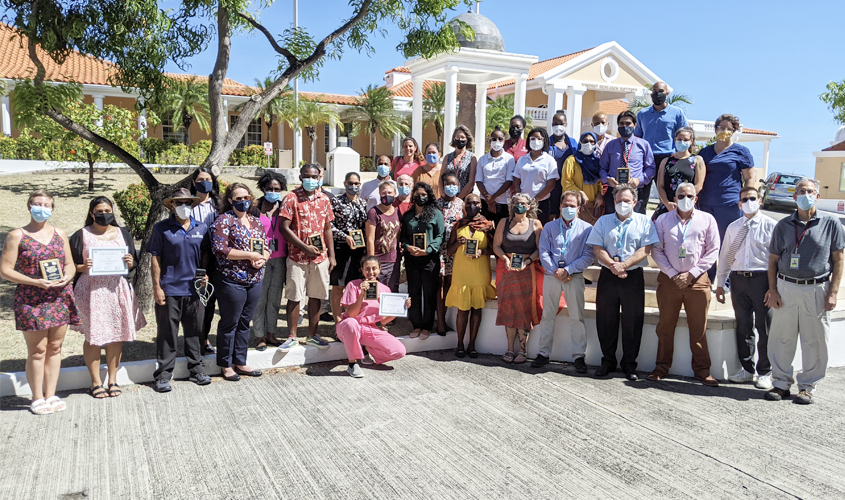 After a two-year hiatus since a record-breaking turnout in 2019, the True Blue campus was once again buzzing with excitement as faculty, students, and local and regional visitors arrived at Open and Upper Modica Hall for the 19th SGU Research Day and Phi Zeta Research Emphasis Day on October 23.
After a two-year hiatus since a record-breaking turnout in 2019, the True Blue campus was once again buzzing with excitement as faculty, students, and local and regional visitors arrived at Open and Upper Modica Hall for the 19th SGU Research Day and Phi Zeta Research Emphasis Day on October 23.
For the first time, the event featured both in-person and virtual presentations. A faculty panel made up of judges from SGU and outside of the University reviewed the presentations and chose winners for each category based on originality, scientific merit, and level of involvement. All winners (complete list below) was presented with a plaque at an awards ceremony held on November 9 at Open Modica Hall.
“This year’s Research Day/Phi Zeta Research Emphasis Day was unique in its hybrid delivery, which facilitated participation by faculty and students around the world,” said Dr. Calum Macpherson, director of research at St. George’s University. “Many thanks to all who presented, attended, or assisted with this year’s Research Day and made the event such a success.”

All told, 135 individuals attended Research Day on campus while 67 registered online. Faculty and students from all four schools at SGU contributed 55 oral presentations—21 of which were virtual—and 51 poster presentations, with 25 presenting online.
Highlights included Grenada’s chief medical officer, Shawn Charles, MD ’17, MIB ’07, MBA ’08, who was accompanied by the Ministry of Health’s senior medical officer, Myanna Charles, MD ’16, MPH ’21, in delivering the first of over a dozen presentations on the COVID-19 experience in Grenada. Other COVID-related topics included SGU’s contribution to screening and surveillance, vaccination and vaccine administration in Grenada, as well as reasons for vaccine hesitancy.
Best Faculty Oral Presentation
- Anne Marie Corrigan – SVM
- Shaniza Haniff – SOM
Best Student Oral Presentation
- Madison Kucinick – SVM
- Daniel Francis – SAS
- Caitlyn Hatcher – SOM
Best Faculty Poster Presentation
- Firdous Khan – SVM
- Karla Farmer-Diaz – SOM
Best Student Poster Presentation
- Ireny Barsoum – SVM
- Melissa Joseph – SOM
Best Psychological Services Center Presentation: Dr. Cecilia Rougier
Best Department of Educational Services Presentation: Oluwatosin Omobolanle Arubuolawe
Best WINDREF Presentation: Tania Khan
– Ray-Donna Peters
Related Reading
- On the blog: Why future residents should pursue research opportunities
- SOM Grad promotes inquisitive mindset as new head of Student Research Institute
- New SVM associate dean inspires future veterinary researchers
